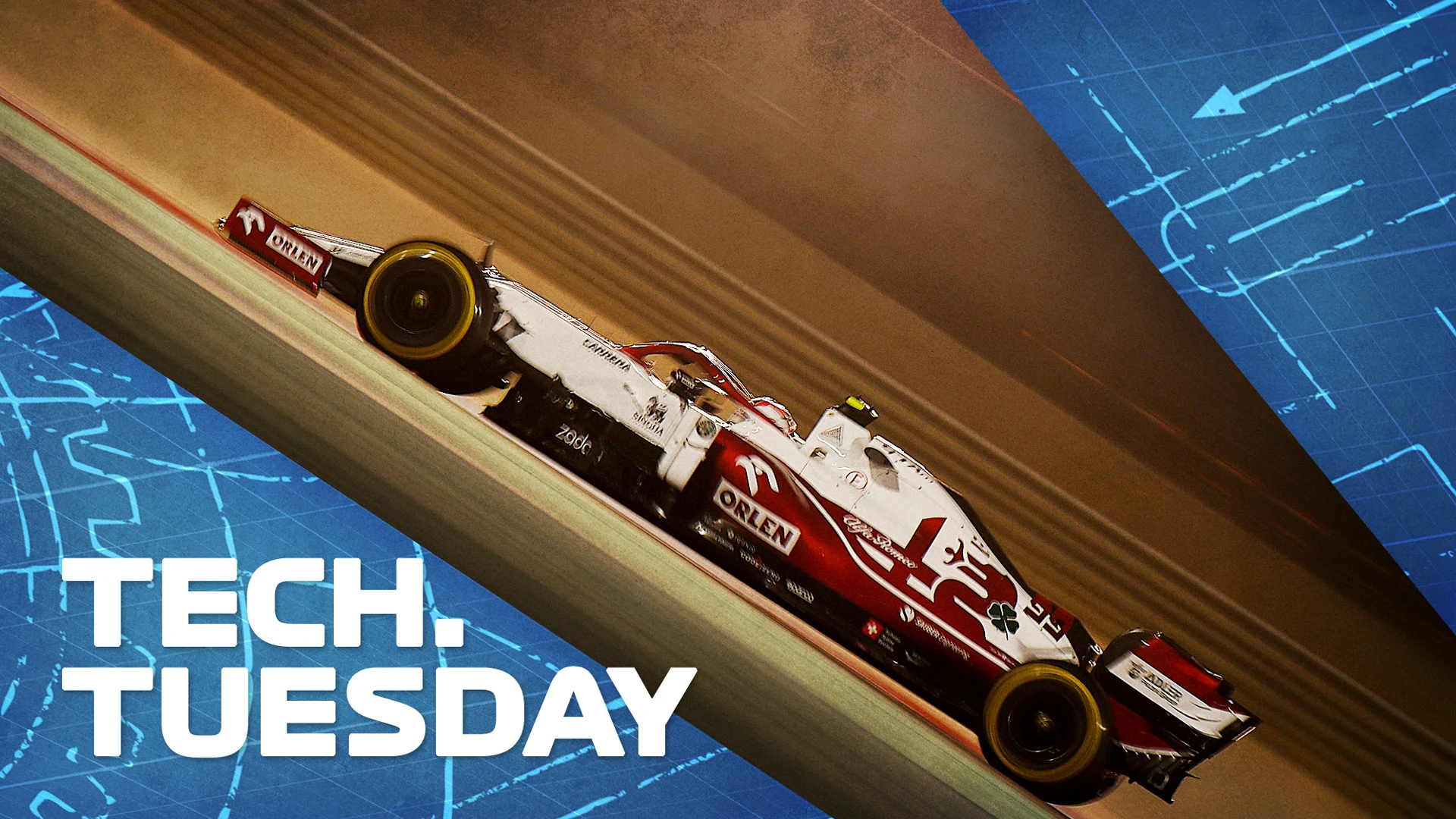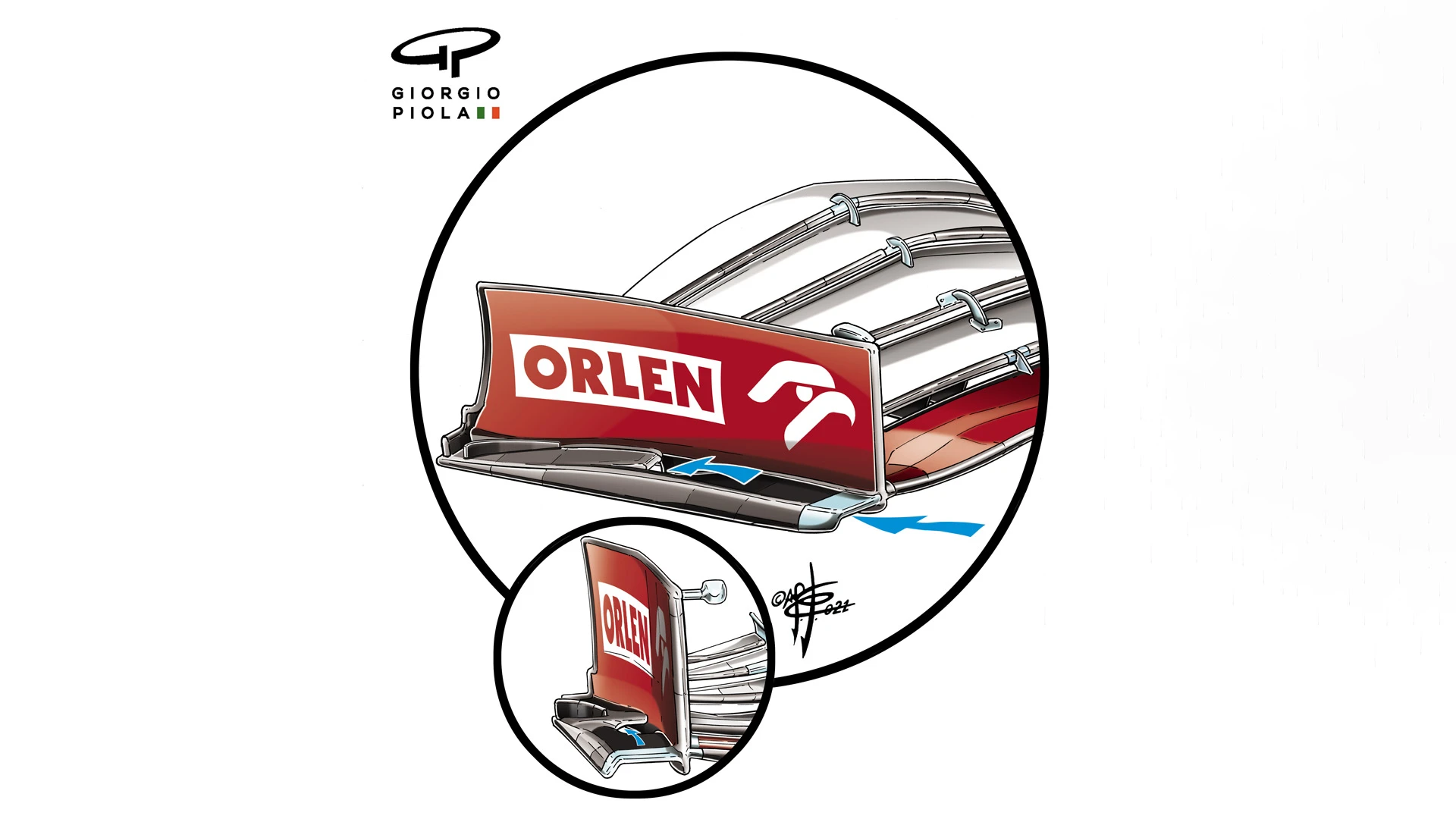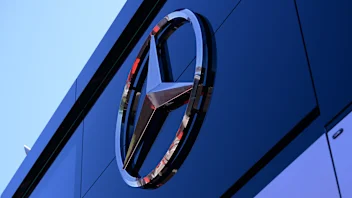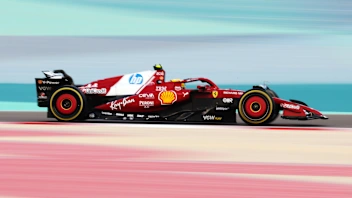TECH TUESDAY: How Alfa Romeo made the biggest relative gains in 2021 with the distinctive C41


Alfa Romeo got their season off to a promising start at the Bahrain Grand Prix and Mark Hughes examines the unique changes made to their car over the winter, with technical illustration from Giorgio Piola.
Although they came away empty-handed in terms of championship points, the C41 showed itself to be a solid Q2 contender with Q3 potential – which is some way above the team’s form of last year when they had the slowest qualifying average of all, behind Haas and Williams.
Relative to the front, they have made the biggest gain of any team from last year to this, as can be seen from the table below.
Percentage of pole position, 2020 to 2021
| Team | 2020 average % to pole | Bahrain GP 2021 % to pole | Gain/loss (%) |
|---|---|---|---|
| Alfa Romeo | 102.875 | 101.923 | 0.952 |
| Red Bull | 100.729 | 100 | 0.729 |
| AlphaTauri | 101.631 | 100.912 | 0.718 |
| Ferrari | 101.429 | 100.865 | 0.664 |
| McLaren | 101.352 | 101.045 | 0.307 |
| Williams | 102.728 | 102.606 | 0.122 |
| Alpine | 101.446 | 101.407 | 0.039 |
| Mercedes | 100.002 | 100.436 | -0.434 |
| Aston Martin | 101.247 | 101.802 | -0.555 |
| Haas | 102.847 | 103.878 | -1.032 |
Partly, this will be a reflection of the improvements in competitiveness of the Ferrari power unit, but even relative to Ferrari themselves Alfa have made bigger gains over the winter. They are clearly on a productive path with their aerodynamics and how the car has been adapted to the new regulations.
There are several distinctive aero features on the car, not least of which is the front wing.
As before, Alfa continue to favour the inboard-loaded front wing, with a sharp tapering down of the outboard flaps. The smaller flap area at the outboard end will reduce direct downforce from that part of the wing in favour of increasing the outwash around the front tyre, bringing aero benefits further down the car.
However, Alfa have sought to compensate for the smaller flap area by contouring the main plane at the bottom of the wing very flat and close to the ground (see contrast with other wings in the pictures).
Shaping it like this will enhance the ground effect of the wing, whereby the downforce generated increases significantly when run close to the ground. The downside of such a geometry is that the downforce generated will tend to become more switch-like as the car changes in pitch and dive. It can even be that the effect can stall if the gap becomes too small.
TECH TUESDAY: Why have Aston Martin and Mercedes opted for 'rippled' floors on their new cars?
To help compensate for this, Alfa have introduced a slot in the foot area of the endplate designed to keep working the underside of that part of the wing even as it gets close to the ground and thereby delaying the stall.
This cascading set of features – extreme inboard loading/flat mainplane/slotted endplate – is a reflection of an aero team that seem confident to go in their own development direction and it will be interesting to monitor the team’s progress with this unusual combination.

Next Up
.webp)




